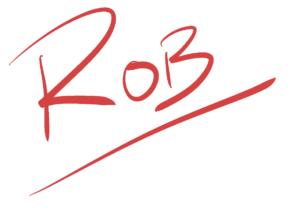How Different Golf Ball Colours Impact Visual Perception

Disclosure: This post contains sponsored content in collaboration with Nifty Golf.
Golf Ball colours might be a minor detail. After all, it’s the technique and skill that matters, right? But did you know that the colour of your golf ball can significantly impact your performance?
Yes, the golfing world has evolved over the years, and ball manufacturers now offer a diverse range of colours other than the traditional white. While some argue it’s just about making the best golf balls more visually appealing, there’s more to it than meets the eye. It’s not just a fashion statement or a way to stand out; there’s a scientific reason behind it.
Vivid shades of yellow, pink, green, orange, and even blue are increasingly finding their way onto the golf course. This shift from the standard white golf balls to coloured ones is not just a marketing ploy. Instead, it’s a strategic move to enhance visual perception, which significantly impacts a golfer’s performance. This article will delve into the fascinating world of golf ball colours and their role in enhancing your golf game.
The colour of a golf ball can, indeed, influence your game. The right colour can enhance your ability to track the ball in different lighting conditions, increase visibility, and even influence your mood and confidence on the course. It’s time to discover the science and psychology behind golf ball colours and their impact on visual perception.
Importance of Visual Perception in Golf
Visual perception in golf is a vital aspect of the game. It’s not just about seeing the ball; it’s about how well you can track the ball’s trajectory, spot it against various backgrounds, and perceive its movement in different light conditions. A golfer’s visual perception directly impacts their ability to make accurate shots and putts.
The human eye is naturally more sensitive to certain colours and less sensitive to others. This sensitivity can be influenced by a variety of factors, including light conditions, background contrast, and even personal preferences. Therefore, the colour of your golf ball can significantly influence your visual perception and, consequently, your golf game.
Visual perception is also linked to psychological factors. The colour of your golf ball can influence your mood, confidence, and overall mental state during the game. Certain colours can stimulate excitement, focus, and alertness, while others may induce calmness and relaxation. Understanding these psychological effects can help you choose the right golf ball colour for your game.
The Science Behind Different Golf Ball Colours
Now, let’s dive into the science behind different golf ball colours. The human eye perceives colours differently because of the way light interacts with our eyes. Different colours have different wavelengths, and these wavelengths interact with the receptors in our eyes, producing the perception of colour.
White is a combination of all colours and reflects all wavelengths of light, making it highly visible in most conditions. However, against a bright sky or in low light conditions, a white golf ball can be challenging to track. On the other hand, coloured golf balls, such as yellow and orange, have specific wavelengths that are easily distinguishable against most backgrounds, making them easier to see in various conditions.
Moreover, the colour of your golf ball can influence your depth perception, which is crucial for determining distances and making accurate shots. For instance, darker colours like blue and black can appear closer than they are, while lighter colours like white and yellow can appear further away. Understanding these visual tricks can help you choose the right golf ball colour for your game.
How Golf Ball Colours Impact Visual Perception
Now that you understand the science behind golf ball colours let’s explore how they impact your visual perception. First and foremost, the colour of your golf ball can help improve visibility. Coloured golf balls, particularly those in bright shades like yellow, orange, and pink, are often easier to spot against the green grass and the blue sky. The high contrast they create can enhance your ability to track the ball’s trajectory and locate it after a shot.

Secondly, golf ball colours can influence your mood and psychological state during the game. For instance, red can stimulate excitement and aggression, which can be beneficial when you need that extra push. Conversely, blue can induce calmness and concentration, helping you stay focused during a challenging round.
Lastly, the colour of your golf ball can impact your depth perception. As mentioned earlier, darker colours can appear closer, while lighter colours can seem further away. This visual trick can influence your judgment of distances and potentially affect your shot accuracy.
Comparing White Golf Balls and Coloured Golf Balls
Traditionally, golf balls were white. This colour was chosen primarily for its high visibility against the green grass. However, as we’ve discussed, white balls can be challenging to track against bright skies or in low light conditions. On the other hand, coloured golf balls provide a higher contrast against most backgrounds, making them easier to spot.
Furthermore, coloured golf balls can offer psychological benefits. They can stimulate different emotions and mental states, influencing your performance on the course. For instance, a bright yellow ball can boost your mood and confidence, leading to better performance.
However, it’s essential to note that the choice between white and coloured golf balls ultimately comes down to personal preference. Some golfers may find coloured balls distracting, while others may find them more visually appealing and easier to track.
The Pros and Cons of Using Different Golf Ball Colours
Like everything else, using different golf ball colours has its pros and cons. On the positive side, coloured golf balls can enhance visibility, improve mood, and influence depth perception. They can also add a fun and personal touch to your game, allowing you to stand out on the course.
On the downside, coloured balls can be distracting for some golfers. They may also be perceived as less professional than white balls, especially in traditional golf circles. Furthermore, not all colours offer the same benefits. For instance, while yellow and orange balls are highly visible, darker colours like blue and black may be harder to spot, especially in low light conditions.
Who Makes Coloured Golf Balls?
Almost all major golf ball manufacturers such as Titleist, Callaway, Vice Golf, offer coloured golf balls within their range.
Choosing the Right Golf Ball Colour for Your Game
Choosing the right golf ball colour for your game is a personal decision. It depends on your visual preferences, perception of different colours, and the specific conditions you usually play in. If you often play in bright, sunny conditions, a coloured ball might be easier to track against the sky. If you play in low light conditions, a white ball might offer better visibility.
Consider your psychological response to different colours. If a particular colour boosts your mood and confidence, it might be the right choice for you. Experiment with different colours to find what works best for you. Remember, the ultimate goal is to enhance your performance and enjoyment of the game.
Conclusion
In conclusion, the colour of your golf ball can significantly impact your visual perception and, consequently, your performance on the golf course. Whether it’s enhancing visibility, influencing mood, or affecting depth perception, the colour of your golf ball plays a critical role.
But which ball do I currently use? Read my article “What Golf Ball Do I Use” to find out!
So next time you’re picking out golf balls, don’t just go for the traditional white. Consider the wide range of colours available and choose the one that best suits your game and visual preferences. Happy golfing. ⛳️🏌🏻♂️
Bye for now!



Blind in my left eye since age 4. Playing golf >50yrs. 82 y/o male with current Hdcp11. Rt handed wearing glasses for min blurring at distance. Do you think certain colored golf balls give a better depth perception than other colors vs white balls?
Hi Billy. I would have thought so but the best colour for the ball would probably depend on the lighting conditions. For me I find white to be the best overall but in dull conditions yellow and orange are very good. I tried using blue, while they’re easier to pick up in the air on a cloudy day, they’re awful to find against green grass!
Let me know how you get on 👍🏻